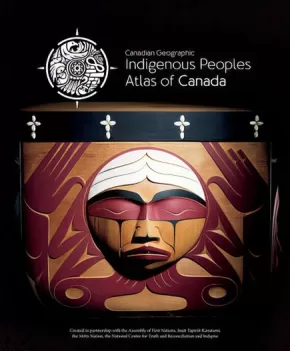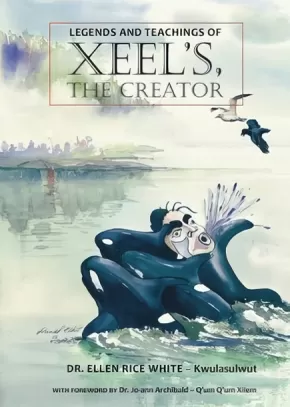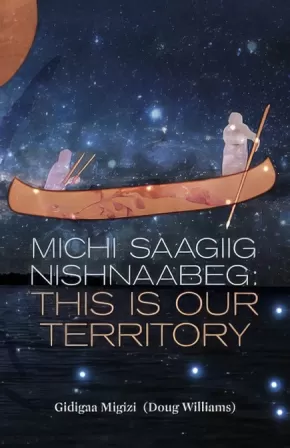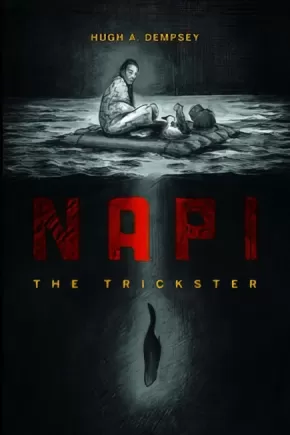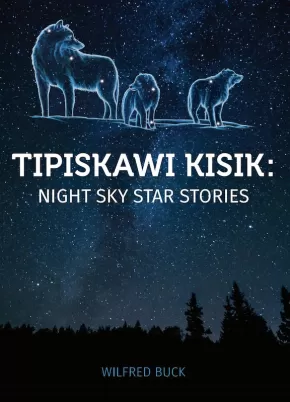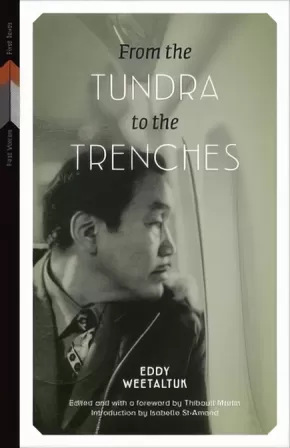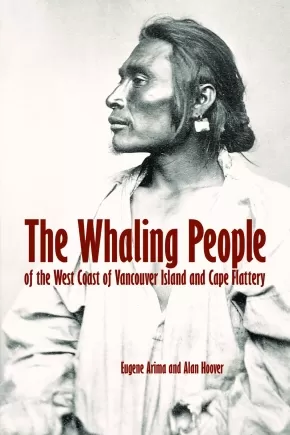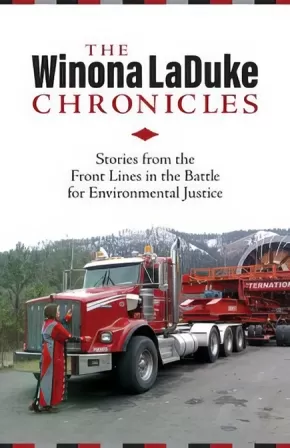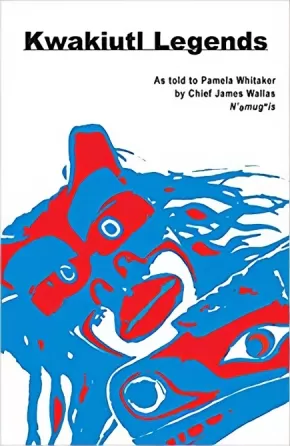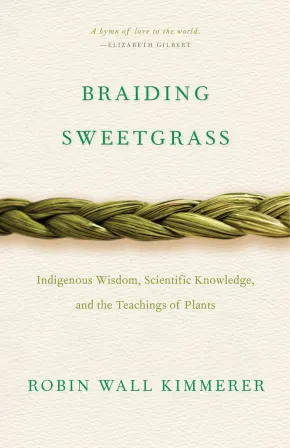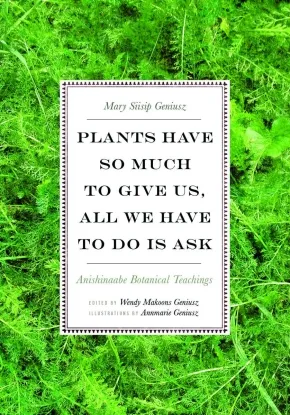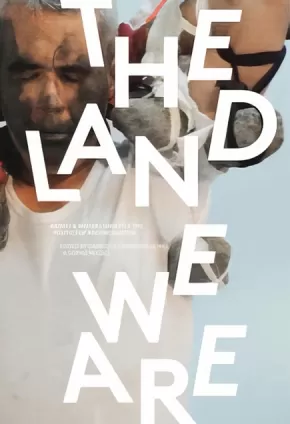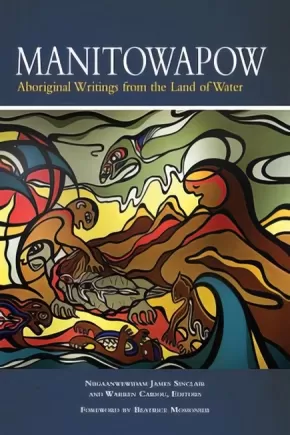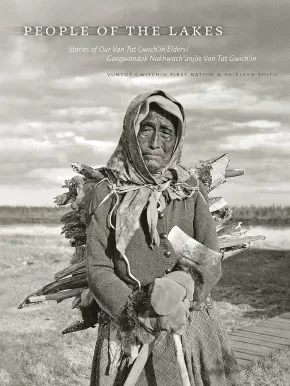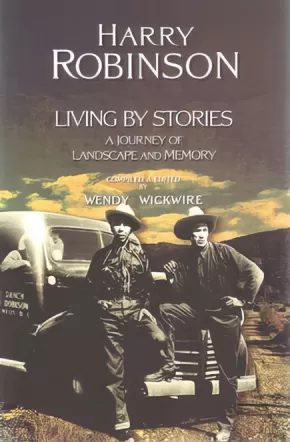
Indigenous Narratives
76
-
90
of
95 Results;
Sort By
Go To
of 7
Indigenous Peoples Atlas of Canada
$99.99
Format:
Hardcover
Text Content Territories:
Indigenous Canadian; Métis; Inuit; First Nations;
ISBN / Barcode: 9780986751622
Synopsis:
Synopsis:
Indigenous perspectives much older than the nation itself shared through maps, artwork, history and culture.
The Royal Canadian Geographical Society, in partnership with Canada's national Indigenous organizations, has created a groundbreaking four-volume atlas that shares the experiences, perspectives, and histories of First Nations, Inuit and Métis peoples. It's an ambitious and unprecedented project inspired by the Truth and Reconciliation Commission's Calls to Action. Exploring themes of language, demographics, economy, environment and culture, with in-depth coverage of treaties and residential schools, these are stories of Canada's Indigenous Peoples, told in detailed maps and rich narratives.
This extraordinary project offers Canada a step on the path toward understanding.
The volumes contain more than 48 pages of reference maps, content from more than 50 Indigenous writers; hundreds of historical and contemporary photographs and a glossary of Indigenous terms, timelines, map of Indigenous languages, and frequently asked questions. All packaged together in a beautifully designed protective slipcase.
Educator Information
Recommended for ages 13+.
The Indigenous Peoples Atlas of Canada includes a four volume print atlas, an online atlas, an app, and more!
Additional Information
322 pages | 10.50" x 12.87"
Legends and Teachings of Xeel's, The Creator
$19.95
Format:
Paperback
Text Content Territories:
Indigenous Canadian; First Nations; Salish; Coast Salish; Snuneymuxw ;
ISBN / Barcode: 9781926886558
Synopsis:
Synopsis:
Snuneymuxw Elder and storyteller Ellen White shares four stories handed down to her from her grandparents and their ancestors.
Legends and Teachings of Xeel’s, the Creator contains four short stories centering around themes such as communication, connection, teaching and respect. The stories featured include: “The Creator and the Flea Lady, The Boys Who Became a Killer Whale, The Sockeye That Became a Rainbow, and The Marriage of the Seagull and the Crow.” Each story is accompanied by a companion piece developed by the storyteller Ellen Rice White (Kwulasulwut) which provides cultural context and an explanation of some of the lessons found in each story.
In the story “The Creator and the Flea Lady”, a Flea mother asks for help saving her premature infant. The Flea woman is reminded of her connection to the many energies surrounding her by Xeel’s and the energies themselves.
In “Boys Who Became a Killer Whale”, eager learners frustrated with the pace and demeanour of their traditional teachers reach beyond what they know and encounter tragedy.
In both the “Sockeye That Became a Rainbow” and “The Marriage of the Seagull and the Crow”, respect and acceptance of the differences of others are central components of the stories. The protagonists struggle with their relationships and the differences they have with their partners.
Educator Information
Please Note: These are a set of uncensored, traditional stories. The content is meant to provide traditional teachings.
Each of the four stories in the book is accompanied by a discussion piece that provides cultural context and questions for the reader to consider. Huĺq̓ umín̓ um̓ language is used throughout. A glossary can be found at the back of the book.
Some subject matter may not be suitable for some readers.
Recommended in the Canadian Indigenous Books for Schools 2019-2020 resource list as being useful for grades 9 to 12 for English Language Arts.
Additional Information
112 pages | 6.75" x 9.75"
Michi Saagiig Nishnaabeg: This Is Our Territory
$22.00
Format:
Paperback
Text Content Territories:
Indigenous Canadian; First Nations; Anishinaabeg; Mississauga; Curve Lake First Nation;
ISBN / Barcode: 9781927886090
Synopsis:
Synopsis:
In this deeply engaging oral history, Doug Williams, Anishinaabe elder, teacher and mentor to Leanne Betasamosake Simpson, recounts the history of the Michi Saagiig Nisnaabeg, tracing through personal and historical events, and presenting what manifests as a crucial historical document that confronts entrenched institutional narratives of the history of the region. Edited collaboratively with Simpson, the book uniquely retells pivotal historical events that have been conventionally unchallenged in dominant historical narratives, while presenting a fascinating personal perspective in the singular voice of Williams, whose rare body of knowledge spans back to the 1700s. With this wealth of knowledge, wit and storytelling prowess, Williams recounts key moments of his personal history, connecting them to the larger history of the Anishinaabeg and other Indigenous communities.
Reviews
"This book gives us an alternative perspective on historical record that is both personal and collective. Doug Williams reminds us of the generations of Indigenous knowledge keepers and of a history that stretches back prior to European contact-including the disruption of contact. This book is his gift to the Michi Saagiig and to all Anishinaabek. It is also a gift to Canadians who want to help decolonize this country. - Armand Garnet Ruffo
"Storytelling is not just a gift. It's not just an art. It's also a responsibility: the weaving together of history, philosophy, culture and humour frequently highlighting a culture's perspective on the world. Doug Williams has been doing this as long as I can remember. He lives the culture, not just talks about it. The people and places he talks about in Michi Saagiig Nishnaabeg are more a part of our history then all the things going on in Ottawa." - Drew Hayden Taylor
Educator Information
Recommended in the Canadian Indigenous Books for Schools 2019-2020 resource list as being useful for grades 9 to 12 for Creative Writing, English Language Arts, Media Studies, and Social Studies.
Additional Information
168 pages | 5.50" x 8.50"
Napi: The Trickster
$19.95
Format:
Paperback
Text Content Territories:
Indigenous Canadian; First Nations; Blackfoot Confederacy (Siksikaitsitapi);
Grade Levels: 12; University/College;
ISBN / Barcode: 9781772032178
Synopsis:
Synopsis:
An enthralling collection of traditional Blackfoot stories revealing the frailty of mankind and the enduring power of narrative.
Napi, the Old Man of the Blackfoot Nation, appears prominently in mythology, sometimes as a quasi-Creator, sometimes a fool, and sometimes a brutal murderer. Although Napi is given credit for creating many of the objects and creatures on Earth, and indeed the Earth itself, the Blackfoot do not consider him to be god-like. Napi stories tell of this mythical figure creating the world and everything in it, but getting into trouble when he starts tinkering with his own creation. Perhaps for this reason, anthropologists have labelled him a trickster/creator.
For thousands of years, people have gathered around the campfire and listened to stories of how Napi blundered and schemed his way through Blackfoot country. They laugh at how Napi was outwitted by a lame fox, how he tried to fly with the geese only to look down when he was told not to and fell to the earth. He makes a perfect subject for telling, listening, and enjoying—and for teaching.
Hugh Dempsey, venerable historian and strong ally of the Blackfoot Nation, has gathered together a number of Napi stories passed on through oral tradition, many recorded and analysed by outsiders, but used by permission of Blackfoot elders. These stories offer complex insight into an ancient and still-thriving culture through the figure of a flawed yet powerful creature—a mirror of humankind itself.
Reviews
"By gathering together a sizeable collection of stories passed down through oral tradition, Dempsey and Koski offer insight into a venerable and still-thriving culture, as well as a piece of history to be kept and passed on to younger generations for years to come." — Vue Weekly
Additional Information
144 pages | 6.00" x 9.00"
Tipiskawi Kisik: Night Sky Star Stories
$15.00
Format:
Paperback
Text Content Territories:
Indigenous Canadian; First Nations; Cree (Nehiyawak);
ISBN / Barcode: 9781927849460
Synopsis:
Synopsis:
Like the night sky above, Tipiskawi Kisik holds a myriad of tales rooted in an Ininew (Cree) perspective. An exploration of stars and constellations—and their associated mythologies—will greet you with age-old knowledge held by Indigenous people prior to European contact. Through Wilfred Buck’s creative, spiritual, and intelligent understanding of the stars, it will be easy to imagine yourself flying inside the Milky Way with Niska (the Goose) or chasing Mista Muskwa (the Great Bear), just like Tepakoop Pinesisuk (the Seven Birds). Above all, these stories can be passed on to the next generation, so they will know of the rich history, science practices, and culture of the Ininew people.
Additional Information
This is a collection of short stories (approximately 25 pages long) with supporting artwork/illustrations. While not aimed at young readers in terms of reading level, this book would support educators in their teaching of Indigenous astronomy to younger audiences, especially since each short story would work well as a read aloud and includes useful illustrations/diagrams of the night sky.
From the Tundra to the Trenches
$24.95
Editors:
Format:
Paperback
Text Content Territories:
Indigenous Canadian; Inuit;
ISBN / Barcode: 9780887558221
Synopsis:
Synopsis:
“My name is Weetaltuk; Eddy Weetaltuk. My Eskimo tag name is E9-422.” So begins From the "Tundra to the Trenches." Weetaltuk means “innocent eyes” in Inuktitut, but to the Canadian government, he was known as E9-422: E for Eskimo, 9 for his community, 422 to identify Eddy.
In 1951, Eddy decided to leave James Bay. Because Inuit weren’t allowed to leave the North, he changed his name and used this new identity to enlist in the Canadian Forces: Edward Weetaltuk, E9-422, became Eddy Vital, SC-17515, and headed off to fight in the Korean War. In 1967, after fifteen years in the Canadian Forces, Eddy returned home. He worked with Inuit youth struggling with drug and alcohol addiction, and, in 1974, started writing his life’s story. This compelling memoir traces an Inuk’s experiences of world travel and military service. Looking back on his life, Weetaltuk wanted to show young Inuit that they can do and be what they choose.
Reviews
“Endlessly interesting; an account of a traditional way of life now lost, a gripping first-hand account of a front-line soldier during the war, and an honest account of a young man’s adventures and misadventures. It is to all our benefit that it has, at last, found its way into print." — Michael Melgaard, The National Post
“Tender, honest, and often raw, Weetaltuk’s storytelling is masterful, engrossing, and deeply human. He has imbued his writing with a philosophical nuance that is characteristically Inuit: very subtle, yet profound." — Siku Allooloo, The Malahat Review
“Recounts the adventures of Inuk veteran Eddy Weetaltuk, from his early life in the North to his escape to the south under an assumed identity, to his enlistment in the Canadian Forces, which took him across the Canadian West, to Japan and Germany, and into battle in Korea. Adopting the name Eddy Vital was necessary in 1951 because the federal government restricted the movement of Inuit people. Through his alias, Weetaltuk was able to see the world; in the army, he experienced equality and respect – all the while never forgetting his true identity as an Inuk. The publication history of From the Tundra to the Trenches is itself a four-decades-long saga of many twists and turns. That it now finds English publication (after first appearing in French and German) owes to the author’s conviction that his life story be read as a work of literature with the makings of a bestseller. Eddy Weetaltuk was right.”— Jade Colbert, The Globe and Mail
“For those interested in Inuit culture it offers the rare and valuable perspective of an Inuk looking out from his culture at the world rather than the world looking in. “ — P. T. Sherrill, CHOICE
Educator & Series Information
From the Tundra to the Trenches is the fourth book in the First Voices, First Texts series, which publishes lost or underappreciated texts by Indigenous writers. This new English edition of Eddy Weetaltuk’s memoir includes a foreword and appendix by Thibault Martin and an introduction by Isabelle St-Amand.
Additional Information
280 pages | 5.50" x 8.50" | 25 colour illustrations, 3 b&w photographs, bibliography
The Whaling People of the West Coast of Vancouver Island and Cape Flattery
$19.95
Artists:
Format:
Paperback
Text Content Territories:
Indigenous Canadian; First Nations;
ISBN / Barcode: 9780772664914
Synopsis:
Synopsis:
The Whaling People live along the west coast of Vancouver Island and Cape Flattery in Washington. They comprise more than 20 First Nations, including the Nuu-chah-nulth (formerly called Nootka), Ditidaht, Pacheedaht and Makah. These socially related people enjoyed a highly organized, tradition-based culture for centuries before Europeans arrived. As whaling societies, they had a unique relationship with the sea.
In The Whaling People, Eugene Arima and Alan Hoover give an intimate account of the traditional ways in which these coastal people looked at and understood the world they lived in. They present the activities, technologies, and rituals that the Whaling People used to make a living in their complex coastal environments, and their beliefs about the natural and supernatural forces that affected their lives. The book features 12 narratives collected from First Nations elders, each illustrated with original drawings by the celebrated Hesquiaht artist Tim Paul.
This informative and entertaining book celebrates the still-thriving cultures of the Whaling People, who survived the devastating effects of colonial power and influences. It includes a history of treaty-making in BC, leading up to the just-ratified Maa-nulth Treaty signed by five First Nations of the Whaling People.
Additional Information
272 pages | 6.00" x 9.00"
Authenticity Note: Because of the artwork and narratives contributed to this work from First Nations elders and Hesquiaht artist Tim Paul, it has received the Authentic Text and Artwork labels. It's up to readers to determine if this work qualifies as authentic for their purposes.
The Winona LaDuke Chronicles: Stories from the Front Lines in the Battle for Environmental Justice
$25.00
Format:
Paperback
Text Content Territories:
Indigenous American; Indigenous Canadian;
ISBN / Barcode: 9781552669594
Synopsis:
Synopsis:
Chronicles is a major work, a collection of current, pressing and inspirational stories of Indigenous communities from the Canadian subarctic to the heart of Dine Bii Kaya, Navajo Nation. Chronicles is a book literally risen from the ashes—beginning in 2008 after her home burned to the ground—and collectively is an accounting of Winona’s personal path of recovery, finding strength and resilience in the writing itself as well as in her work. Long awaited, Chronicles is a labour of love, a tribute to those who have passed on and those yet to arrive.
Reviews
“Winona LaDuke’s latest book reads like a prayer. These are holy words— inspirational stories taken straight from the heart of indigenous communities throughout the world…(Chronicles) is lyrical, instructional, and infused with wry humor when the weight of the message becomes unbearable…LaDuke provides a roadmap through tribal nations’ belief systems; offering a spiritual compass and invaluable insight into the relationship of prophesy to the realities of climate change, economic collapse, food scarcity and basic human rights.” — Huffington Post
Educator Information
Recommended for students in grades 9 - 12, as well as those at a college/university level, for courses in science, environmental science, and social justice.
Additional Information
310 pages | 6.00" x 9.00"
Kwakiutl Legends: As Told to Pamela Whitaker by Chief James Wallas
$16.95
Format:
Paperback
Text Content Territories:
Indigenous Canadian; First Nations; Kwakwaka'wakw (Kwakiutl);
ISBN / Barcode: 9780888392305
Synopsis:
Synopsis:
The stories in this book relate the traditional tales which Mr. James Wallas has learned from his elders, who lived in Quatsino Sound and on Hope Island. Mr. Wallas's forefathers are members of a people known generally as the Kwakiutl, although the term is misleading because it originally referred to a sub-group living at Fort Rupert. The Kwakiutl inhabit an area which at present includes Campbell River at the southern extreme, Quatsino Sound at the western extreme, various inlets of mainland B.C. at the eastern extreme, and Smiths Inlet at the northern extreme. Traditionally, the Kwakiutl lived in villages located in this general area (excluding Campbell River an Cape Mudge) which were organized into tribes. Today, most of them live on reserves near towns, maintaining some remote villages for food preparation and preserving during the spring, summer and fall.
Additional Information
216 pages | 5.50" x 8.50" | 11 Colour Line Drawings
Braiding Sweetgrass: Indigenous Wisdom, Scientific Knowledge and the Teachings of Plants (PB)
$33.95
Format:
Paperback
Text Content Territories:
Indigenous Canadian; First Nations; Anishinaabeg; Potawatomi; Indigenous;
ISBN / Barcode: 9781571313560
Synopsis:
Synopsis:
As a botanist, Robin Wall Kimmerer has been trained to ask questions of nature with the tools of science. As a member of the Citizen Potawatomi Nation, she embraces the notion that plants and animals are our oldest teachers. In Braiding Sweetgrass, Kimmerer brings these two lenses of knowledge together to take us on “a journey that is every bit as mythic as it is scientific, as sacred as it is historical, as clever as it is wise” (Elizabeth Gilbert).
Drawing on her life as an indigenous scientist, and as a woman, Kimmerer shows how other living beings—asters and goldenrod, strawberries and squash, salamanders, algae, and sweetgrass—offer us gifts and lessons, even if we've forgotten how to hear their voices. In reflections that range from the creation of Turtle Island to the forces that threaten its flourishing today, she circles toward a central argument: that the awakening of ecological consciousness requires the acknowledgment and celebration of our reciprocal relationship with the rest of the living world. For only when we can hear the languages of other beings will we be capable of understanding the generosity of the earth, and learn to give our own gifts in return.
Reviews
“Robin Wall Kimmerer has written an extraordinary book, showing how the factual, objective approach of science can be enriched by the ancient knowledge of the indigenous people. It is the way she captures beauty that I love the most—the images of giant cedars and wild strawberries, a forest in the rain and a meadow of fragrant sweetgrass will stay with you long after you read the last page.”— Jane Goodall
"I give daily thanks for Robin Wall Kimmerer for being a font of endless knowledge, both mental and spiritual."— Richard Powers,New York Times
"In a world where only six percent of mammalian biomass on the planet now comprises of wild animals, I longed for books that pressed me up against the inhuman, that connected me to an inhuman world. Braiding Sweetgrass by Robin Wall Kimmerer moved me to actual tears."— Alexandra Kleeman, The Millions
"In Braiding Sweetgrass, botanist Robin Wall Kimmerer tackles everything from sustainable agriculture to pond scum as a reflection of her Potawatomi heritage, which carries a stewardship 'which could not be taken by history: the knowing that we belonged to the land.' . . . It's a book absorbed with the unfolding of the world to observant eyes—that sense of discovery that draws us in."— NPR
“With deep compassion and graceful prose, Robin Wall Kimmerer encourages readers to consider the ways that our lives and language weave through the natural world. A mesmerizing storyteller, she shares legends from her Potawatomi ancestors to illustrate the culture of gratitude in which we all should live.”—Publishers Weekly
“The gift of Robin Wall Kimmerer’s book is that she provides readers the ability to see a very common world in uncommon ways, or, rather, in ways that have been commonly held but have recently been largely discarded. She puts forth the notion that we ought to be interacting in such a way that the land should be thankful for the people.”—Minneapolis Star Tribune
“Braiding Sweetgrass is instructive poetry. Robin Wall Kimmerer has put the spiritual relationship that Chief Seattle called the ‘web of life’ into writing. Industrial societies lack the understanding of the interrelationships that bind all living things—this book fills that void. I encourage one and all to read these instructions.”— Oren Lyons, Faithkeeper, Onondaga Nation and Indigenous Environmental Leader
Additional Information
|
Plants Have So Much to Give Us, All We Have to Do Is Ask: Anishinaabe Botanical Teachings
$31.99
Artists:
Editors:
Format:
Paperback
Text Content Territories:
Indigenous Canadian; First Nations; Anishinaabeg;
Reading Level: N/A
ISBN / Barcode: 9780816696765
Synopsis:
Synopsis:
Mary Siisip Geniusz has spent more than thirty years working with, living with, and using the Anishinaabe teachings, recipes, and botanical information she shares in Plants Have So Much to Give Us, All We Have to Do Is Ask. Geniusz gained much of the knowledge she writes about from her years as an oshkaabewis, a traditionally trained apprentice, and as friend to the late Keewaydinoquay, an Anishinaabe medicine woman from the Leelanau Peninsula in Michigan and a scholar, teacher, and practitioner in the field of native ethnobotany. Keewaydinoquay published little in her lifetime, yet Geniusz has carried on her legacy by making this body of knowledge accessible to a broader audience.
Geniusz teaches the ways she was taught—through stories. Sharing the traditional stories she learned at Keewaydinoquay’s side as well as stories from other American Indian traditions and her own experiences, Geniusz brings the plants to life with narratives that explain their uses, meaning, and history. Stories such as “Naanabozho and the Squeaky-Voice Plant” place the plants in cultural context and illustrate the belief in plants as cognizant beings. Covering a wide range of plants, from conifers to cattails to medicinal uses of yarrow, mullein, and dandelion, she explains how we can work with those beings to create food, simple medicines, and practical botanical tools.
Plants Have So Much to Give Us, All We Have to Do Is Ask makes this botanical information useful to native and nonnative healers and educators and places it in the context of the Anishinaabe culture that developed the knowledge and practice.
Additional Information
344 pages | 7.00" x 10.00" | Paperback
The Land We Are: Artists and Writers Unsettle the Politics of Reconciliation
$24.95
Editors:
Format:
Paperback
Text Content Territories:
Indigenous Canadian;
ISBN / Barcode: 9781894037631
Synopsis:
Synopsis:
The Land We Are is a stunning collection of writing and art that interrogates the current era of reconciliation in Canada. Using visual, poetic, and theoretical language, the contributors approach reconciliation as a problematic narrative about Indigenous-settler relations, but also as a site where conversations about a just future must occur. The result of a four-year collaboration between artists and scholars engaged in resurgence and decolonization, The Land We Are is a moving dialogue that blurs the boundaries between activism, research, and the arts.
The contributors to this book include leading artists and scholars engaged in questions of resurgence, restitution, and decolonization.
Contributors: Jordan Abel, Leah Decter, Jonathan Dewar, David Garneau, Ayumi Goto, Allison Hargreaves, Gabrielle L'Hirondelle Hill, Jaimie Isaac, David Jefferess, Layli Long Soldier, The New BC Indian Art and Welfare Society Collective, Sophie McCall, Peter Morin, Skeena Reece, Dylan Robinson, Sandra Semchuk, Adrian Stimson, Clement Yeh, and Keren Zaiontz.
Reviews
"This beautifully produced, richly illustrated volume not only offers readers a visual journey into the featured artistic installations and performance pieces, but through its creative use of text and graphic design is itself an artistic statement on reconciliation." --Winnipeg Free Press
Educator Information
Recommended for students in grades 11 and 12, as well as at a college/university level.
Additional Information
240 pages | 6.50" x 9.50"
Manitowapow: Aboriginal Writings from the Land of Water
$35.00
Editors:
Format:
Paperback
Text Content Territories:
Indigenous Canadian; First Nations; Inuit; Métis;
ISBN / Barcode: 9781553793076
Synopsis:
Synopsis:
This anthology of Aboriginal writings from Manitoba takes readers back through the millennia and forward to the present day, painting a dynamic picture of a territory interconnected through words, ideas, and experiences. A rich collection of stories, poetry, nonfiction, and speeches, it features:
- Historical writings, from important figures.
- Vibrant literary writing by eminent Aboriginal writers.
- Nonfiction and political writing from contemporary Aboriginal leaders.
- Local storytellers and keepers of knowledge from far-reaching Manitoba communities.
- New, vibrant voices that express the modern Aboriginal experiences.
- Anishinaabe, Cree, Dene, Inuit, Métis, and Sioux writers from Manitoba.
Educator & Series Information
Created in the spirit of the Anishinaabe concept debwe (to speak the truth), The Debwe Series is a collection of exceptional Aboriginal writing from across Canada. Manitowapow, a one-of-a-kind anthology, is the first book in The Debwe Series. Manitowapow is the traditional name that became Manitoba, a word that describes the sounds of beauty and power that created the province.
Recommended for grades 11 and 12, university students, and adults.
Additional Information
416 pages | 6.00" x 9.00"
People of the Lakes: Stories of Our Van Tat Gwich'in Elders / Googwandak Nakhwach'anjoo Van Tat Gwich'in
$44.99
Format:
Paperback
Text Content Territories:
Indigenous Canadian; First Nations; Dene; Dinjii Zhuh (Gwich'in);
ISBN / Barcode: 9780888645050
Synopsis:
Synopsis:
Many people have a mental picture of the Canadian north that juxtaposes beauty with harshness. For the Van Tat Gwich'in, the northern Yukon is home, with a living history passed on from elders to youth. This book consists of oral accounts that the Elders have been recording for 50 years, representing more than 150 years of their history, all meticulously translated from Gwich'in. Yet this is more than a gathering of history; collaborator Shirleen Smith provides context for the stories, whether they are focused on an individual or international politics. Anthropologists, folklorists, ethnohistorians, political scientists, economists, members of First Nations, and readers interested in Canada's northernmost regions will find much to fascinate them.
Additional Information
|
Harry Robinson: Living by Stories: A Journey of Landscape and Memory
$24.95
Editors:
Format:
Paperback
Text Content Territories:
Indigenous Canadian; First Nations; Salish; Interior Salish; Syilx (Okanagan); Similkameen (Smelqmix);
Grade Levels: University/College;
ISBN / Barcode: 9780889225220
Synopsis:
Synopsis:
Following on two previous collections— Write It on Your Heart: The Epic World of an Okanagan Storyteller (1989) and Nature Power: In the Spirit of an Okanagan Storyteller (2004)—Living by Stories is the third volume of oral narratives by Okanagan storyteller Harry Robinson. This third collection documents how the arrival of whites forever altered the Salish cultural landscape.
Living by Stories includes a number of classic stories set in the “mythological age” about the trickster/transformer, Coyote, and his efforts to rid the world of bad people— spatla or “monsters,” but this new volume is more important for its presentation of historical narratives set in the more recent past. As with the mythological accounts, there is much chaos and conflict in these stories, mainly due to the arrival of new quasi-monsters—“SHAmas” (Whites)—who dispossess “Indians” of their lands and rights, impose new political and legal systems, and erect roads, rail lines, mines, farms, ranches and towns on the landscape.
With permission from Harry Robinson, Wendy Wickwire began recording Robinson's oral stories in 1977. Robinson took his role as a storyteller very seriously and worried about the survival of the oral tradition and his stories. “I’m going to disappear”, he told one reporter, “and there’ll be no more telling stories.”
Review
Whenever I need to be reminded that language is magic and that stories can change the world, I go to Robinson.
- Thomas King
Additional Information
288 pages | 6.00" x 9.00"
Stories from Harry Robinson
Edited and compiled by Wendy Wickwire
Sort By
Go To
of 7

